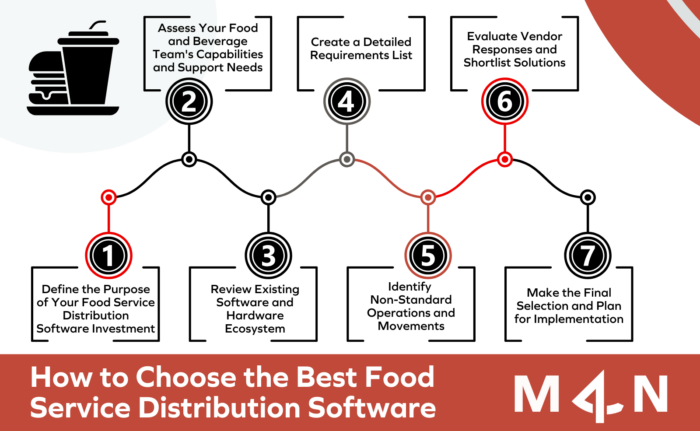
As a retailer, your supply chain demands have shifted dramatically in the last year. Balancing demands, inventory stock levels and ensuring the goods are in the right location for distribution are a constant challenge. Either you are already adapting to these demands and are eager to proactively address opportunities, or you are sitting back wondering why your business is shrinking. Here are important levers to pull to get you to the next level with omnichannel fulfillment opportunities.
A New Era in Consumer Expectations Left Supply Chains Scrambling
The pandemic brought about challenges in supply chains that many retailers simply weren’t prepared for. When the population was suddenly unable to shop in person, companies were forced to step up their game to meet new demands for rapid in-home delivery and curbside pick-up options to keep revenues flowing.
With all of the changes that arose, inventory control became a real issue. With increasingly complicated supply chains that involved a mixture of warehouse-based and store-based order fulfillment, companies floundered to keep track of the stock they had, to know where to keep that stock, and to translate stock to new online ordering so that they weren’t selling items they didn’t have. Inventory control suffered as global supply chains were disrupted by the virus, leaving many companies unable to restock promptly.
Expedient Adaptation Became a Necessity
Seeing how the pandemic was affecting business, companies quickly made moves to add new options to get products to consumers. Developing more resilient supply chains didn’t begin with the pandemic, but it highlighted the need for them and had more companies looking for ways to weather the current storm and those to come. Spreading out production and sourcing helps create more resilient supply chains, but it comes with its own set of challenges.
Another aspect of building more resilient supply chains we saw during the pandemic was adjusting demand planning. Huge demand spikes created inventory issues across the supply chain, and companies that were quick to jump into action to better foresee consumer demands came out ahead of their competitors.
In the meantime, customer experiences suffered for the lack of preparedness in many companies. Inventories dwindled and companies sold items they didn’t have in stock due to poor visibility internally and for customers on their websites.
Lesson Learned: Change is Inevitable
The rapid evolution of consumer expectations during the pandemic majorly expedited the shift of sales from brick-and-mortar to online. Consumer expectations will continue to evolve and meeting those expectations will require new solutions.
We’ve learned that agility, resilience, and visibility are critical components in weathering supply chain challenges. Companies of all sizes struggled to roll with the punches. Many companies faltered and are learning the hard way that making the investments in those supply chain capabilities is well worth the time, money, and effort.
Finding a Way to Stay Prepared
There’s no doubt that omnichannel distribution solutions came to the rescue for many companies as the pandemic wore down defenses and customers asked more than retailers could give. However, omnichannel equates to a more complicated supply chain. Technology solutions can help companies make the most of their new, faster, more multi-faceted supply chains by improving inventory control, quality control, and other points along the supply chain.
Updating your warehouse can help you turn these challenges into opportunities. Modern Warehouse Management Systems (WMS) enable real-time inventory visibility, labor management, and equipment productivity with performance analytics that drives faster, more accurate order fulfillment and improved supply chain efficiency.
For retailers, a modern WMS has capabilities for inventory allocation and special distribution handling to stores, taking into consideration store ranking and priorities. All while ensuring the work is driven efficiently and scheduled properly to meet outbound truck departure times for accurate and on-time arrival of orders to stores. Some warehouse solutions offer the benefit of a Work Task Manager that can be configured to address the dynamic, ever-changing factors that drive the work in the warehouse, and takes into account priorities of replenishments, and interleaving of tasks within the DC, to make the work more efficient.
Is Omnichannel Distribution the Answer?
In the end, the evolution of the omnichannel supply chain is about the consumer and what makes them happy. According to research by McKinsey, service is the primary factor for omnichannel distributors to differentiate themselves and please their customers, implying that that’s what it all comes down to.
Figuring out how to achieve customer satisfaction profitably is a challenge. The lines are blurring between channels and devices, and omni-channel fulfillment grows increasingly more complex every day. Success lies in finding innovative and cost-effective ways to distribute high-volume consumer and retail goods, managing the overflowing product pipeline and integrating people, processes, systems and data.
The inevitable shifts wrought by the pandemic happened. Now the implementation of new tech, and therefore better systems and processes are needed to support these changes and the inevitable continuation of this shift.
How ready is your supply chain?


